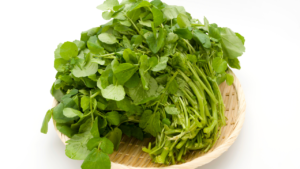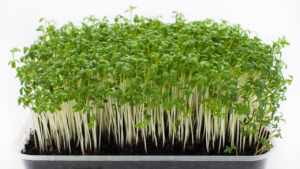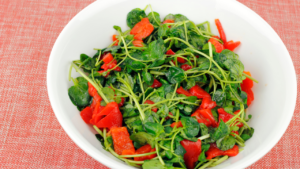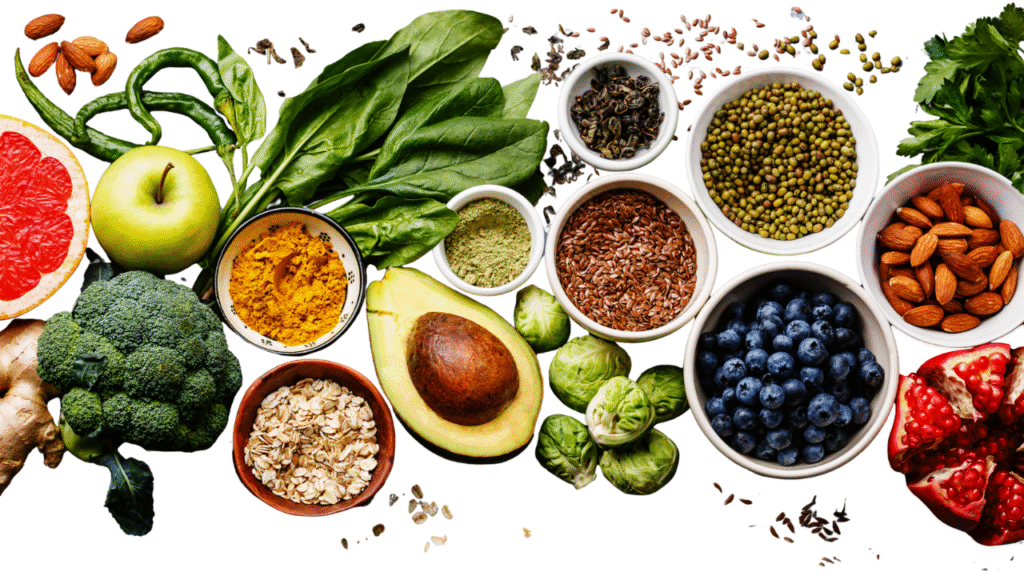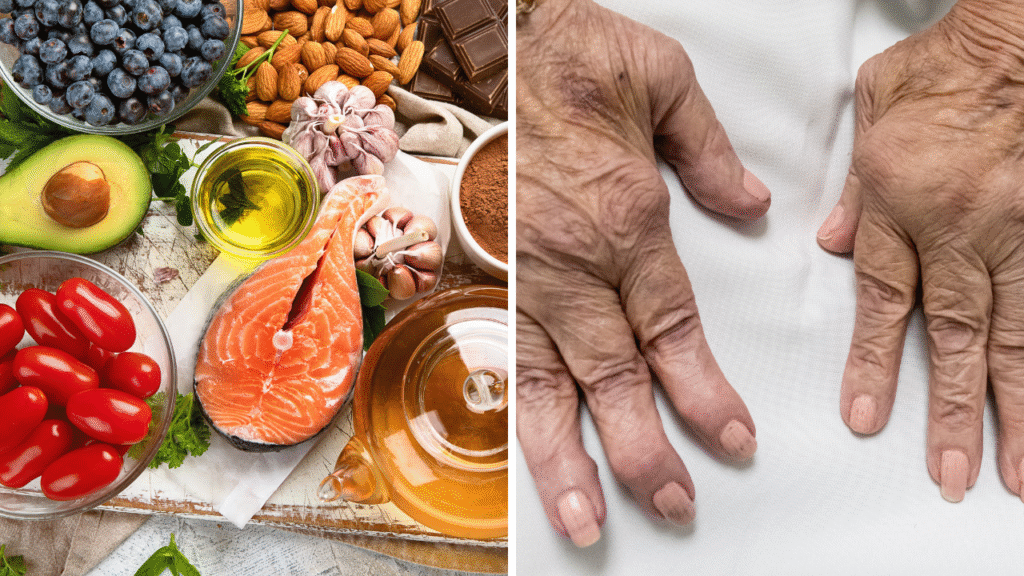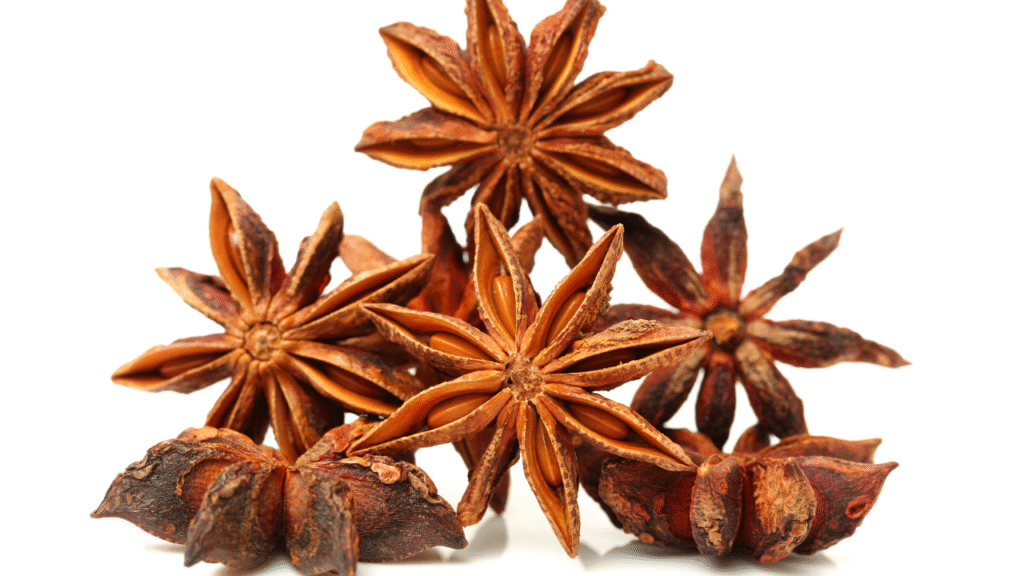Watercress is a dark, leafy green vegetable and annual plant of the Brassicaceae family. Its mineral and vitamin content may support bone and eye health and enhance athletic performance.
Watercress is one of the most valuable, promising plants. For ages, it has been well-known for its various medicinal uses. It is very low in calories and high in fiber.
This plant has excellent benefits and nutrients. Watercress is rich in many vitamins and minerals such as vitamin (C, A, E, K}, folate acid, iodine, iron, protein, and calcium.
The stems and leaves are edible. They can be eaten fresh or boiled and sauteed. The taste is unique: bitter, slightly sweet and sour.
Because of its excellent benefits and nutrients watercress, it has been used for medical treatment since ancient times.
One can use it to maintain digestive and kidney health, cleanse the body of toxins, inhibit the development of cancer cells, treat a sore throat, treat tuberculosis, and treat scabies.
It is an annual plant from the Brassicaceae family, including Brussels sprouts, kale, and cabbage (1). It is easy to grow and often grows widely in small rivers, ponds, swamps, and shallow lakes.
Nutrition
The vitamins, minerals, and antioxidants in watercress can provide significant health benefits.
Vitamins
- Vitamin A —also known as retinol, is essential for keeping your retinas healthy and your vision sound.
- Vitamin C- supports your immune system, helps you heal from injuries, and reduces your risk of infection.
- Vitamin K
Minerals
- Calcium
- Beta-carotene
- Carotenoids
- Magnesium
- Potassium
Nutrients per Serving
One cup (34 grams) of watercress contains the following (3):
- Calories: 4
- Carbs: 0.4 grams
- Fat: 0 grams
- Fiber: 0.2 grams
- Protein: 0.8 grams
- Vitamin A: 22% of the
- Reference Daily Intake (RDI)
- Vitamin C: 24% of the RDI
- Vitamin K: 106% of the RDI
- Calcium: 4% of the RDI
- Manganese: 4% of the RDI
Related: Garlic: 11 Proven Health Benefits and Uses – SunDrg Health
Health Benefits of Watercress.
1. Protect bone health
Watercress contains minerals for bone health, including potassium and phosphorus, calcium, and magnesium (4).
It is high in Vitamin K, a component of osteocalcin. Osteocalcin is a protein that makes up healthy bone tissue and helps regulate bone turnover.
A lack of vitamin K can increase an individual’s risk of bone fracture.
One cup of watercress provides more than 100% of the RDI for vitamin K, so eating one cup daily will meet one’s daily requirement of vitamin K (2).
2. Beneficial for Heart Health
Watercress contains carotenoids such as zeaxanthin, lutein, and beta carotene, which help to decrease heart disease and lower blood pressure {3}.
Watercress Nitrate’s content helps decrease the stiffness and thickness of blood vessels and reduces inflammation, boosting blood vessel health {2}.
Furthermore, it may help lower cholesterol, improving heart health {23}.
3. May Prevent Certain Types of Cancer
Watercress is high in phytochemicals and carotenoids, known for being potent antioxidants.
Like most antioxidants, carotenoids have been linked to reduced free radicals in the body.
These compounds lead to less oxidative stress and a lower risk of cell damage, cancer, and other chronic diseases like arthritis {11}
4. It May Enhance Athletic Performance
It contains high levels of dietary nitrates, compounds found naturally in foods such as radishes, beets, and leafy green vegetables like watercress (1,3).
Dietary nitrates increase the amount of nitric oxide in your blood and relax your blood vessels, which may improve exercise performance (3,2 ).
It lowers resting blood pressure and reduces the oxygen needed during exercise, which may increase exercise tolerance (2).
5. May Aid Weight Loss
Watercress may also benefit weight management because one cup (34 grams) contains only four calories.
Adding this nutritious, low-calorie vegetable to your diet, which can help you feel full, might help with weight loss.
How to Use
Watercress is an edible vegetable that contains vitamins, minerals, fiber, and water. It is an aquatic vegetable, so it is fresher more frequently in the warmer months, usually from April to September. It’s a light, crunchy leaf that tastes peppery and bright, making it a perfect choice for salads, juices, soups, and more.
Here are some ways you can add watercress to your diet:
- Toss watercress into any salad.
- Saute watercress with ginger and olive oil as a flavorful side dish.
- Blend watercress with vegetables and fruits into a green smoothie.
- Stir it into your soup near the end of cooking.
- Add watercress to a sandwich.
- Turn it into pesto by blending it
- Try watercress soup.
- Serve it with eggs.
Precautions
Watercress is rich in vitamin K. People on the blood-thinning medication Warfarin should be careful about how much watercress they eat. It is also high in nitrates, which can be converted to nitrites if exposed to bacteria. Nitrites have been linked to an increased risk of stomach cancer.
Conclusion
Watercress is a powerhouse vegetable that packs essential nutrients.
It is rich in many vitamins and minerals but is extremely low in calories and high in fiber.
It contains antioxidants, which may lower the risk of heart disease and protect bones and several types of cancer.
Watercress is a delicious addition to any meal and a nice change from the usual lettuce or spinach.

